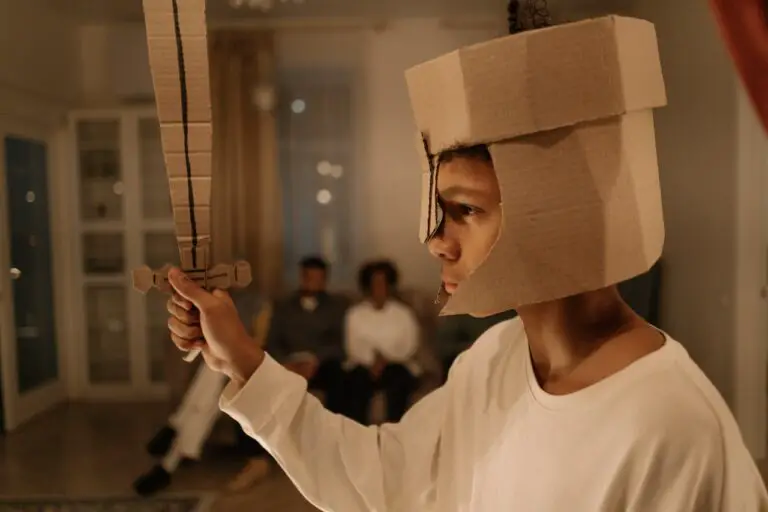Role play is one of the most powerful EFL/ESL techniques for developing fluency in speaking. I use it all the time, and my students love it. Not only does it provide a safe, enjoyable environment for gaining confidence in English, but it pushes students to improve their vocabulary and grammar.
However, not all role plays go to plan. I’ve had several misfires as a result of my own errors of judgement. After doing it enough times, I’ve identified a number of things which can go wrong, and how to avoid them.

What is role play?
Role play is the improvised enactment of a scenario in which the actors/students take on the role of another person. It comes in many forms. From a 2-minute exchange of information, to a half-hour debate resolving a situation, or even as far as tabletop role-playing games like Dungeons and Dragons, the foundation is promoting natural interactions which develop speaking skills.
To learn more about the benefits of role play, read my article Why All EFL/ESL Teachers Should Use Role Play Activities. If you’re interested in the difference between role play, simulation and dramatization in the EFL/ESL classroom, click this link to read my post which will tell you all the details.
For now, let’s look at 5 problems which can occur in EFL/ESL role plays and how to fix them.

1. Unclear expectations
Before any role play activity, the number one mistake a teacher can make is not explaining what the students are expected to do. While it may be obvious in your head, it’s not always clear to students.
I like to give my students plenty of free rein to improvise and use the language they already have. This helps things flow naturally. But if students think they have to say specific phrases (and you haven’t given them any), or they have to wait for certain triggers before they can speak, the whole thing becomes very stressful.

On the other hand, some students might see the activity as an opportunity to say and do whatever they want, regardless of the role play scenario. When you tell them to focus on the topic, they get frustrated.
SOLUTION: Model a role play. After explaining how it works, choose a confident student and do an example, showing them exactly what you’re looking for.
For more on setting expectations, read my in-depth guide How to Set Rules & Expectations in Private EFL/ESL Classes.
2. Pitched at the wrong level
First of all, avoid role plays with absolute beginners. The activity requires a certain level of fluency – those who can’t put a basic sentence together are not going to improvise a short conversation.
Assuming your group has the skills to engage in the activity, you still need to consider if the role play scenario is appropriate for their level. If someone is giving advice, do the students know the modals “should” and “ought to”? And if you have advanced students, are you giving them a scenario which will challenge them?
SOLUTION: While preparing, imagine the type of conversation you’d expect two English-speaking people to have in each scenario – do you think your students can do something similar? Make sure vocabulary and grammar are suitably targeted. During the role play, if students find it too easy, insert something into the scenario so they have to improvise quickly.
Make sure you know how to approach role play activities with different age groups by reading my articles Teaching EFL/ESL to Teenagers & Adults With Role Play and How to Teach Children EFL/ESL With Role Play: Best tips.
3. Lack of relevant vocabulary
In a similar way to mistake #2, a lack of relevant vocabulary will hinder students’ progress in a role play. This is regardless of level.
It’s frustrating for you and the students when they come to a screeching halt because they can’t find the right word. If this happens every now and then, it’s not the end of the world, but when every sentence is a struggle, students often revert to their native language, or just go quiet.
SOLUTION: Take 5 minutes with your students before the role play to brainstorm some important words they might need. This is a great opportunity to introduce some valuable vocabulary. Write it on a whiteboard or A4 dry erase pocket so they can access it throughout.
For more on valuable vocabulary, read my article on the Best Method to Improve EFL/ESL Students’ Vocabulary.

4. Wrong amount of teacher input
Often, teachers will be tempted to get involved in role plays when, really, they need to let their students breathe. This activity isn’t about the teacher. Students need time to think, and someone jumping in and telling them exactly what to say doesn’t help them learn.

In contrast, at times a teacher does need to intervene to keep things flowing – switch up the scenario and take a different direction, or supply some critical language. At the right moment, this can transform a role play.
SOLUTION: Find the right balance. Generally, I only intervene if my students ask me how to say something, if they make some egregious errors, or when they get too excited and start speaking their native language. Avoid correcting every mistake.
And don’t be afraid to swoop in and change the scenario by adding a new character or an unexpected event. Just be sure to progress the role play and not hog all the attention.
5. Not having the right amount of fun
The problem I experience most in my role plays is the students having too much fun.
Too much fun? That sounds like a miserable thing to say. The truth is, fun helps learning, but when it turns into silliness, it’s quite easy to get out of control.
Having too much fun is likely a problem you’ll only experience with children (although I’m sure adults are capable of it, too). I have them up and about, using props and furniture to help. Sometimes the excitement is overwhelming.
Adults are more prone to not having enough fun. They might take the scenario too seriously, or try to say the right thing at the right time, losing the spontaneity of the activity. This can make role play a dry, sterile activity which nobody wants to do.
SOLUTION: Set ground rules and enforce them throughout. When students step over the line, call an end to the role play and remind them of the limits. You can always start the role play again.
For those who can’t find the fun, show them what they can do – introduce some humour, some silliness in order to create a more relaxed atmosphere. If you’re willing to make yourself a clown, they might follow suit.
A balancing act
The key to successful role plays is keeping everything in balance. Difficulty of language, level of excitement, teacher intervention – if anything strays too far away from the middle ground, that’s where problems arise.

It may seem overwhelming to keep track of all these things. But with some smart preparation and clear expectations, you’ll find an equilibrium. And it’s fine to get it wrong once in a while. I certainly do. But after several reps with a group, you all find the zone where everyone’s happy, and learning runs wild.
To take role play to the next level, I’ve been using tabletop role playing game systems with several private classes. They’ve worked an absolute treat, and I’d recommend them to anyone.
For more information and guidance on role play in the EFL/ESL classroom, check out all my articles on the subject:
Why All EFL/ESL Teachers Should Use Role Play Activities
Dramatization vs Simulation vs Role Play: Guide for EFL/ESL
5 Problems to Avoid With Role Play in EFL/ESL + Solutions
How to Teach Children EFL/ESL With Role Play: Best tips
Teaching EFL/ESL to Teenagers & Adults With Role Play
5 Awesome EFL/ESL Role-play Scenarios for Teens (+ tips)
5 Exciting EFL/ESL Role Play Scenarios for Kids (+ tips)
5 Engaging EFL/ESL Role Play Activities for Adults (+ tips)







